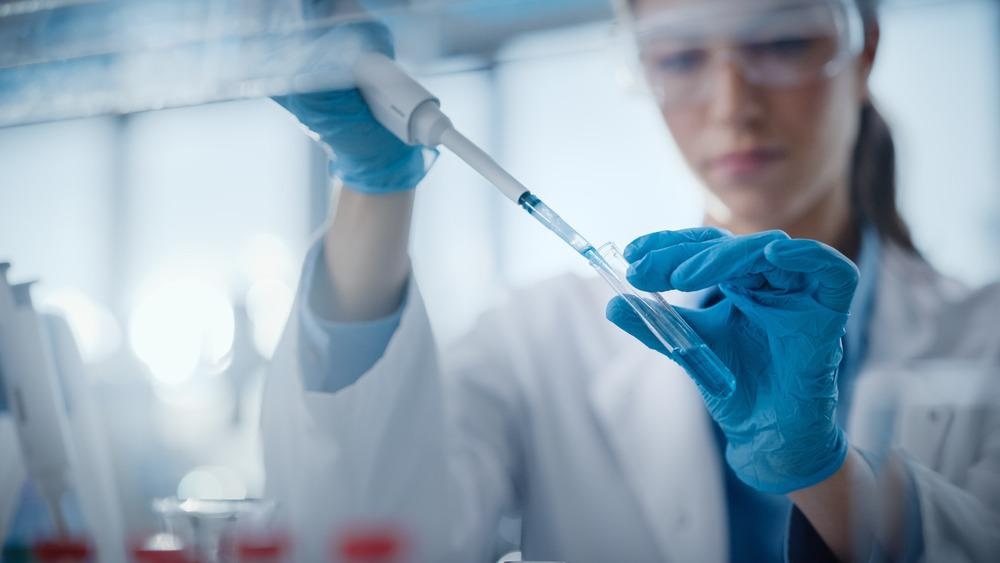Although many of the conventional molecular techniques used to study microorganisms can provide a wide range of details, they are often limited in their ability to provide information on behavior and other distinct cellular properties. Therefore, various microscopy techniques can also be used to provide additional information on pathogenic organisms for microbiology studies.

Image Credit: Gorodenkoff/Shutterstock.com
Molecular Techniques to Study Microbiology
A wide range of molecular biological techniques is often utilized for microbiological analyses as a result of their ability to rapidly detect microorganisms in an efficient and often cost-effective manner.
One of the most notable techniques that are often relied upon for microbiology studies are polymerase chain reaction (PCR)-based techniques. In addition to its most notable application in the diagnosis of coronavirus disease 2019 (COVID-19), PCR assays are also routinely used for the diagnosis of other respiratory and gastrointestinal infections.
In addition to PCR assays, several new technologies have also transformed microbiological investigations, including those that are utilized within clinical settings. Next-generation sequencing (NGS), for example, is capable of detecting and quantifying microorganism populations present within patient specimens.
Notably, NGS can distinguish between microorganisms that are present at high levels from other pathogenic organisms that are present in lower numbers within the same sample.
Several probe techniques are also used for molecular diagnostics, some of which include hybridization protection assays, hybrid capture techniques, and peptide nucleic acid fluorescence in situ hybridization (PNA-FISH) assays.
Applications of Microscopy for Microbiology Studies
Microbiological culturing is often used to isolate and identify microorganisms from tissue or fluid samples. Herein, microbiologists will determine the in vitro growth of the pathogenic organisms in the selective or differential medium.
Once isolated, various non-specific or specific stains, such as the Gram stain, can be used to allow the researcher to differentiate between Gram-positive and Gram-negative bacteria on a light microscope.
In addition to light microscopy, several other microscopy methods have also been used to provide additional information on microorganisms. Some of these include atomic force microscopy (AFM) and scanning electron microscopy (SEM).
AFM and Microbiology
AFM relies upon a very sharp tip located at the end of the cantilever to sense and scan the surface of any given sample. As the cantilever tip moves across the sample surface, an attractive or repulsive force is applied between the atoms present on the tip and those located on the surface of the specimen.
The deflection of the cantilever is then assessed during scanning to provide a three-dimensional (3D) topographic image of the sample.
For microbiological purposes, AFM is ideal as it does not require the use of any fixatives that might alter the biological activities of the microorganism of interest. Furthermore, this technique allows researchers to control the force of the cantilever while simultaneously studying the pathogen of interest within a specific pH range.
To date, AFM has been used to measure and study the morphology of various bacteria and other microorganisms, such as Escherichia coli, Entericiccysfaecalis, Staphylococcus aureus, and Bacillus subtilis.
The application of AFM for studying these organisms has allowed researchers to assess the antimicrobial efficacy of certain nanomaterials against these bacteria by providing information on the formation of pores, cleavage, cell cracks, and cell disruption to treated microorganisms.
SEM to Study Infectious Orbital Implants
Typically, orbital implants will be applied to recover any volume that has been lost in the orbit after various ocular surgeries.
Like any other medical device, the insertion of orbital implants increases the patient’s risk of certain complications, which can include the direct contact of the implant with the conjunctival mucosa which is a vulnerable location for infections.
Several studies have described the successful application of SEM in visualizing microorganisms that have adhered to different orbital implants, even when clinical symptoms have not yet been reported.
One study found that SEM was able to provide evidence of microbial growth, even when standard culturing methods were not sensitive enough for detecting the presence of these microorganisms. In addition to its utility for diagnostic purposes, researchers have also utilized SEM to describe the antibacterial properties of different implant coatings.
Fluorescence Microscopy
A fluorescence microscope relies upon fluorochromes, which are fluorescent chromophores that absorb energy from a light source that is subsequently emitted as visible light for analytical purposes.
Within clinical microbiology, fluorescence microscopy allows researchers to identify pathogens at specific locations within a cell, as well as to characterize various properties of the infection.
Two types of immunofluorescence techniques that are often used for microbiological assays include direct immunofluorescence assay (DFA) and indirect immunofluorescence assay (IFA). Whereas DFA relies upon the use of specific antibodies that are stained with a fluorochrome to bind to the target pathogen, IFN utilizes secondary antibodies that are stained with a fluorochrome rather than the primary antibodies.
Confocal microscopes, which use a laser to scan multiple z-plans in successive order, can also be combined with immunofluorescence to provide high-resolution two-dimensional (2D) images of stained tissues.
One of the most notable applications of confocal microscopy in microbiology is its use in examining both live and fixed biofilms.
References and Further Reading
Fairfax, M. R., Bluth, M. H., & Salimnia, H. (2018). Diagnostic Molecular Microbiology: A 2018 Snapshot. Clinics in Laboratory Medicine 38(2); 253-276. doi:10.1016/j.cll.2018.02.004.
Microscopy Solutions for Microbiology [Online]. Available from: https://www.zeiss.com/microscopy/us/solutions/laboratory-routine/clinical-laboratory/microbiology.html.
Arumugasamy, S. K., Chellasamy, G., Govindaraju, S., & Yun, K. (2021). Chapter 30 – Recent developments in using atomic force microscopy in microbiology research: An update. Recent Developments in Applied Microbiology and Biochemistry 317-323. doi:10.1016/B978-0-12-821406-0.00030-8.
Toribio, A., Ferrero, M. A., Rodriguez-Aparicio, L., & Martinez-Blanco, H. (2019). Evaluation of bacterial adhesion in exposed orbital implants using electron microscopy and microbiological culture. Archivos de la Sociedad Espanola de Oftalmologia 94(12); 609-613. doi:10.1016/j.oftale.2019.09.004.
Instruments of Microscopy [Online]. Available from: https://opentextbc.ca/
Disclaimer: The views expressed here are those of the author expressed in their private capacity and do not necessarily represent the views of AZoM.com Limited T/A AZoNetwork the owner and operator of this website. This disclaimer forms part of the Terms and conditions of use of this website.